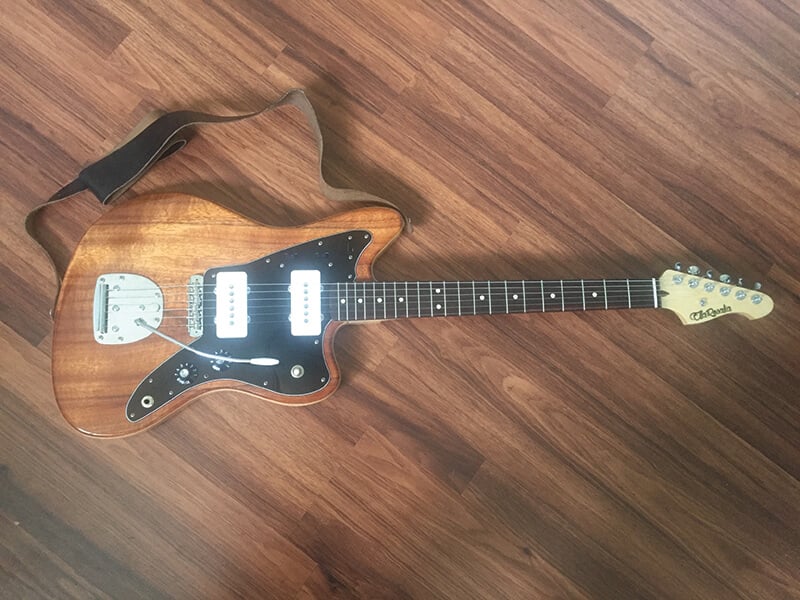Warmoth shares some helpful tips for avoiding common mistakes on your next Partscaster build.
Over the last 36 years, Warmoth has built a lot of guitar parts, and helped a lot of players create their dream guitar or bass. During that time, we’ve also observed many of the common missteps budding luthiers make. In the interest of helping to create a world with more great guitars in it, we have listed them below.
RELATED: Read Performer’s Ultimate Guide to Building Your Own Partscaster
1. Check the Neck Spec
The question we are probably asked most frequently is “Will this neck fit this body?” The answer is always: 1) check the dimensions, then 2) check the shape.
In the world of “bolt-on” style replacement parts, Fender’s original guitar and bass heel specs are somewhat standard, and most parts manufacturers use them, including Warmoth. Unfortunately, they are not universal…even among Fender products. Careful measurement is the only way to be sure your parts are compatible. Check not just the width and length, but also the depth of the neck pocket, which is critical in achieving the correct playing action.

Warmoth neck
Once you know the dimensions of the neck heel and neck pocket match, check their shapes. Most guitar bodies and necks employ the Stratocaster shape, which is rounded at the end. However, bodies and necks from the Telecaster family use a heel that is squared. It’s always best to match these shapes correctly. In a pinch, a Strat neck will fit and intonate in a Tele-shaped pocket, but the reverse is not true. A Tele-shaped neck heel will not fit in a Strat-shaped pocket, because its squared corners prevent it from fully inserting into the rounded end.
[insert_ad]
2. The Pilot Program
On an electric guitar, there are many components that are mounted with woodscrews, and all those screws need properly drilled pilot-holes. Pilot-holes relieve the pressure the screw will exert as it wedges itself into place, and without them the wood is at risk of splitting.
There is a common misconception that pilot-holes should be as small as possible. Untrue. Pilot-holes should be as large as they can possibly be, leaving just enough wood for a screw to bite into and hold securely. Even pilot-holes pre-drilled by the manufacturer should not be trusted, primarily because the manufacturer has no idea which woodscrews you intend to use. Also, the wood your body or neck is made of might have expanded or contracted as it adjusted to your local temperature and humidity, altering the size of the pilot-holes. For proper fit it is always necessary to measure.

Warmoth showcase body
You should never assume pre-drilled holes for mounting hardware are a perfect fit either. Manufacturing tolerances on hardware vary, and pieces like bridge studs and tuner bushings should always be measured and compared to the actual size of the hole they are going in, and adjustments made if necessary. Simply forcing these parts into place invites splits and cracks.
Taking the time to measure everything and drill proper pilot-holes may seem tedious, but the problems that could arise from ignoring this step are exponentially worse.
3. An Allen Wrench and a Dream
All too often, aspiring guitar builders expect an “Ikea experience.” While assembling a guitar from pre-made parts is well within the ability of the average do-it-yourselfer, it does require more patience and attention to detail than assembling a computer desk with an Allen wrench.
Don’t assume your guitar will play like a dream the instant you finish tightening the last screw. It takes a while for all the parts to realize they are not different trees anymore, but a single guitar. Give them time to settle into the tension of the strings, vibrate together, and get to know each other. As they do, you can begin to make the fine adjustments required for optimum playability.

Final Warmoth Jazzmaster Assembly
The final set-up is key to a great playing instrument, and for this reason many amateur builders pay a pro luthier to do this work. Whoever does it should pay particular attention to the neck and frets. Most Warmoth necks are playable as they are received and do not require fret leveling. However, even the most well-constructed necks can move with changes in temperature, humidity, and string tension, and sometimes additional fretwork is necessary.
There are many resources available online for learning to assemble and work on guitars, including Warmoth’s website and blog. To build a successful guitar or bass, educate yourself, be patient, and measure, measure, measure!
ABOUT THE AUTHOR
Aaron Cheney is the Director of Marketing at Warmoth Guitar Parts, Inc. He has been modifying, building, writing about, and performing on guitars for over 30 years.
